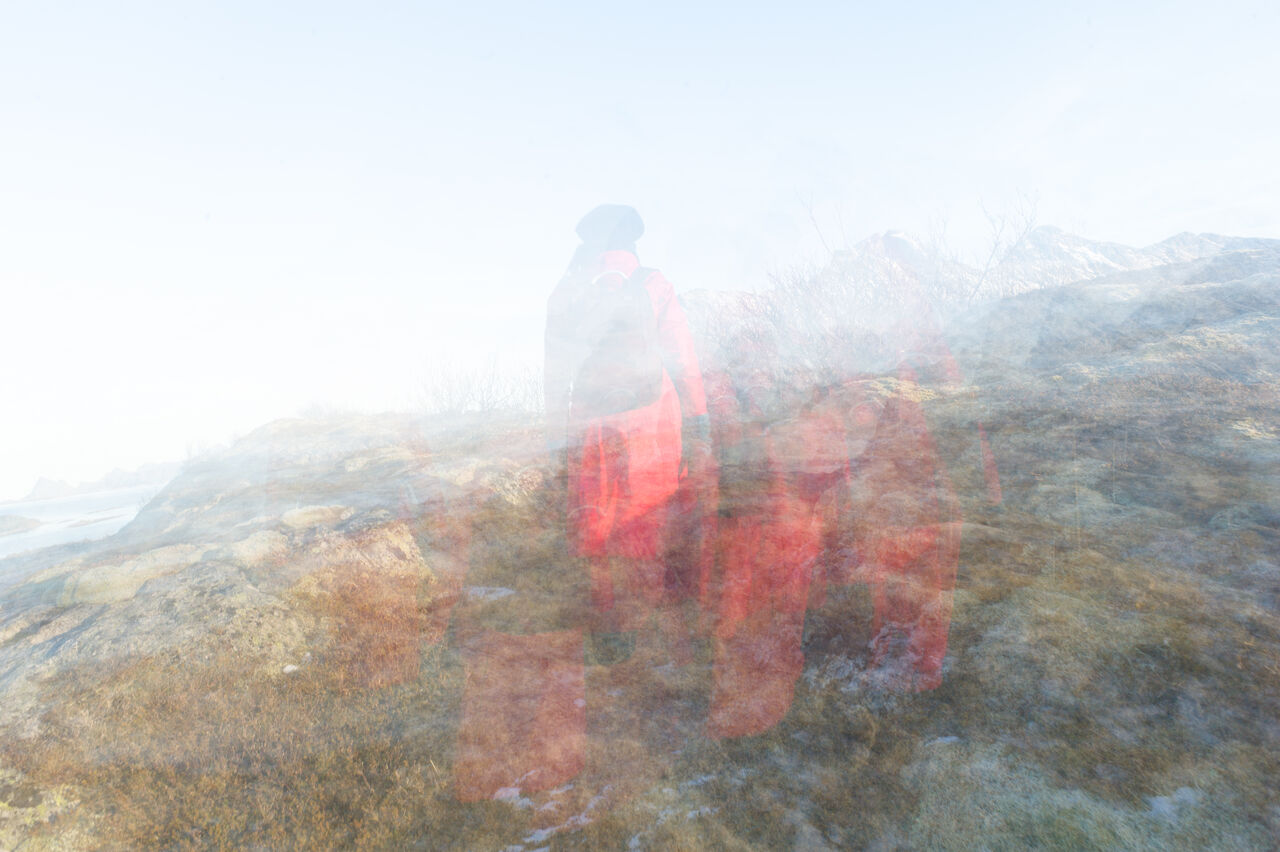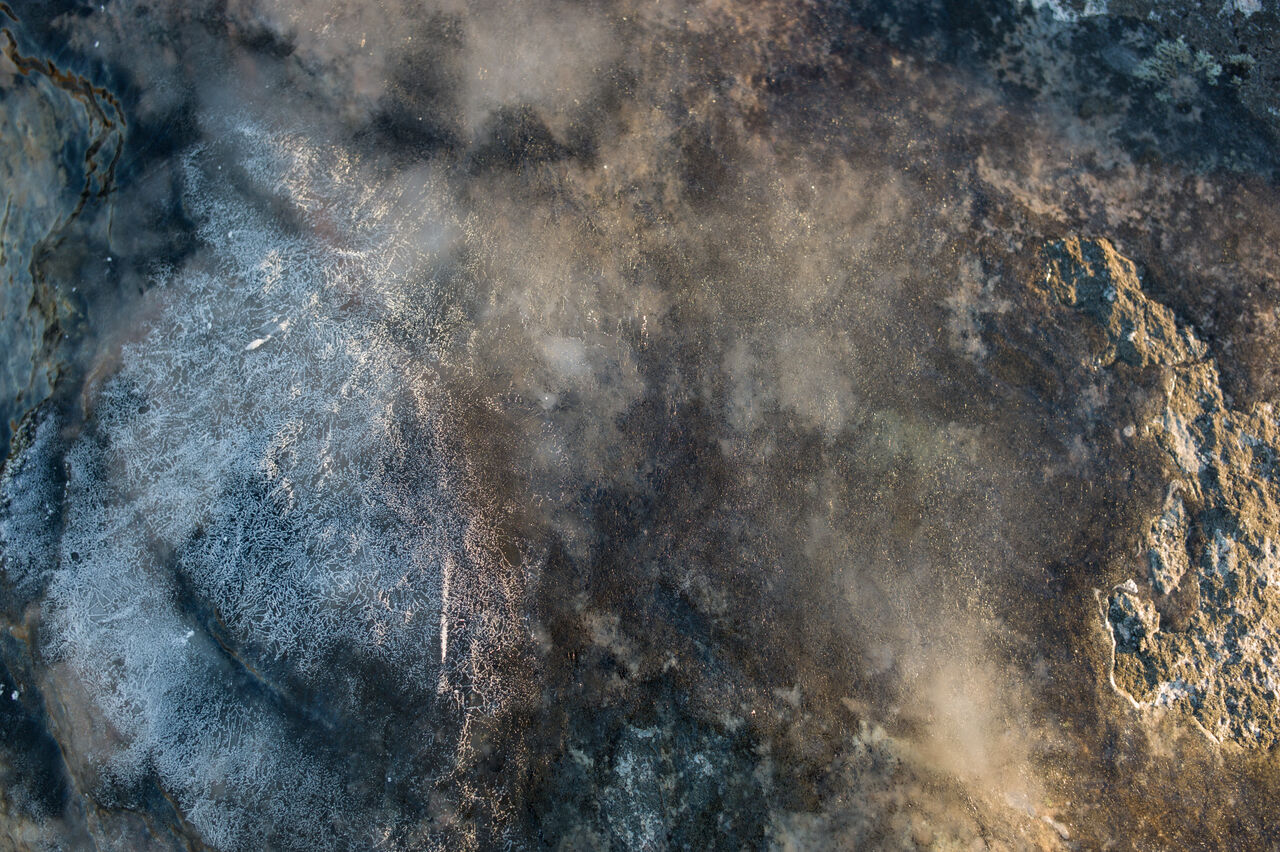Fallowing
On laying fallow as a regenerative practice, of benefit to fields, bodies and networks.
Including reflections on Doing Nothing, FoAM’s practice-based research where we investigated what happens when we do nothing at all. With excerpts from Thriving in Uncertainty, miscellaneous notebooks and commonplaces. Photos by Maja Kuzmanović, Nik Gaffney and Rasa Alksnyte, from the album Transiency FoAM bxl.

Can you keep the deep water still and clear,
so it reflects without blurring?
Can you love people and run things,
and do so by not doing?
Opening, closing the Gate of Heaven,
can you be like a bird with her nestlings?
Piercing bright through the cosmos,
can you know by not knowing?
Lao Tzu, Tao Te Ching
Putting "doing nothing" into practice is the one thing the farmer should strive to accomplish.Masanobu Fukuoka, The one-straw revolution.
Fallowing – leaving farmland unplanted for one or more growing seasons – replenishes soil fertility and prevents its degradation. It makes way for plants to grow, wither and decompose of their own accord. Fallowing calls for a suspension of deliberate cultivation; neither seeding nor weeding, planting nor tending. Letting plants drift and take root – or not.
Write nothing!
Read nothing!
Say nothing!
Print nothing!
—Nothingists / Ничевоки
What if we (as individuals, families, communities, organisations...) incorporated fallowing as part of our daily, weekly and yearly rhythms? Imagine creating space in your working day for open exploration, without a specific goal. What if your paid work included periods of aimless observing, responding to the environment, guided by curiosity? If your work schedule was patterned after seasonal cycles of fertility, growth, dispersion, and rest? The Futures of Doing Nothing

Fallowing is not an end in itself – it is practised to replenish reserves, ideas and resources. As part of longer regenerative cycles, fallowing rewilds perspectives, and opens vistas beyond the usual filter bubbles. It enables a drifting to unexpected places, encountering new people, stories, and possibilities. The energy, knowledge, and inspiration gathered during fallowing supplies compost for more productive, goal-driven pursuits.
A fallow period can span days, months or years, depending on those involved. It could combine shorter cycles of expansion and contraction – inner contemplation and outward exploration. These cycles might be driven by available resources, directly linked to seasonal changes, the rotation of the Earth, hours of daylight and darkness, Planning with the Seasons or something else entirely.
Think of a time in your life when you laid fallow for a while. What did fallowing look like for you? What led to your need to lay fallow? What did you (not) do while fallowing? How did you feel? What made fallowing possible?
Next, think of your life in the near now. In what circumstances could you benefit from fallowing? What would you need to make this happen (time, resources, people involved...)? How would you like it to be? How long do you expect it to last? A fixed stretch of time, or a series of shorter intervals? What if it doesn't happen? How will you make it happen?
Lying fallow consists of a peculiar mixture of passivity and activity, directed towards the outside world, while at the same time being aimless and embraced with abandon; it is characterised by openness, availability, alertness and attention refraining from the impulse to control or change things. It is an active/passive attitude that focuses on the emptiness and empties itself, and precisely because of this can be open to the fullness of the moment, of the here and now. Lying fallow is a breeding ground for inspiration and creativity. It is precisely when you stop being fixated on the result, when you temporarily switch off the will and set the consciousness free, that the inspiration can rise from the depths, as an aptitude and a gift and the ideas can begin to flow.Ton Lemaire, Verre Velden

A fallow year at FoAM Bxl
In 2016, FoAM in Brussels carved out a fallow year – a sabbatical for the whole studio. It was important to do this together, at once, rather than some leaving others to take up the slack, and was easier to stick to the plan with everyone on board.
Trying to explain what Doing Nothing means for us and why are we doing it is not easy. Mostly after the conversation people are convinced that what they are doing is very much related to what we are (not) doing and I must do something to collaborate in one or other way on their project too. When I explain that I might but not now because I'm also in transiency and will concentrate only on the activities that are related to that. They still don't understand why I wouldn't answer their questions, come to their meetings and so on… I think lying fallow needs as much discipline (or even more) as doing something. It is very easy to give in and lose track of what is important.Excerpt from Rasa’s Transiency Diary
It took three years to prepare ourselves, our clients, audiences and funders to be able to fallow for a year. We built the year into our multi-annual programming, wrapping up projects, and accumulating the resources required to support FoAM’s minimal operations, including the livelihoods of our core team. The hardest thing was saying 'no' or 'later', passing up interesting opportunities for funding and collaboration. It sometimes felt like we were pulling the carpet from beneath our feet. At the beginning of the fallow year, our work was gaining traction locally and internationally, and there were interesting collaborations on the horizon. If we stopped, would all that disappear? Would we have to start again? How would we be able to survive after depleting our stockpiled resources?
I don’t want burning bridges to light my way, I want to leap off the bridge into a bioluminescent sea.excerpt from Maja’s Transiency Diary
A year of 'doing nothing', marked by openness and emergence. Although the 'plan' was to do nothing, being open to what crossed our paths meant that we ended up doing a lot, but without the pressures of predefined aims and imposed deadlines. We had reduced our commitments to a minimum, granting stability, but also space to pursue things ‘there wasn’t time for’, to embrace the unexpected and explore the unknown. Making (music, photography, software, elaborate dinners...), reading, thinking, tinkering, meditating, walking, writing, gardening, gathering, tending, mourning...
Finding a balance between drift and 'new purpose', managing the pressure of finding 'what's next' and the process of leaving oneself open to possibilities. Making time for recovery, fallowness, expansion. What potentials appear when unclouded by past inertia, or the reactionary overcorrection of avoidance? How to reconcile the 'rational' desire for clarity, precision and density with the more ethereal, circumspect, ambiguous desire for understanding complexity, 'thickness' and multiplicity?Excerpt from Nik’s Transiency Diary
Our fallow year was turbulent, both within the studio and in the world. We were witnesses to transitions and transformations, inner and outer, personal and societal. 2016 was, among other things, the year of the terrorist bombing in Brussels, the Brexit referendum, Trump winning the US presidential election, and Pokémon GO. Fallowing afforded time and headspace to process. To let it all sink in.
Fallowing is not exact science, but a heuristic practice. A permanent state of improvisation. Going with the flow. Wu wei, effortless doing. Proactive rather than reactive, like crossing a river by feeling the stones, following the seams. There were occasional tensions in having to ‘unfallow’ to handle routine administration and maintenance tasks, or realising that the openness led to us starting too many things. Yet there were fewer knee-jerk reactions and more considered responses, both during the fallow year and those that followed. Physical and mental distance from the day-to-day management enabled us to scan the horizon and analyse what our place in the world is and what it could be. Opening our antennae to signals from the world and FoAM’s network increased our capacity to make decisions that took longer timeframes and broader perspectives into account.
As the year draws to its end, a paradoxical sense of urgency to hold the space for reflection is increasing. At the same time I feel as if I’m crouching on starting blocks, my (mental) muscles tensing for a sprint. I have to keep reminding myself that the next phase is going to be more like a long hike on uneven terrain than a short run with clearly delineated start and finish lines.Excerpt from Maja’s Transiency Diary
We experienced the joy of reconnecting with FoAM’s scattered kin, yet also the pain of separation. With greater distance from consensus reality it became apparent that some relationships, spaces and activities were no longer working. Having time and energy to notice unsustainable patterns gave us the courage to separate, and disengage. We allowed our bodies to follow their natural rhythms. We slept better, waking up looking forward to the day. We cycled between tension and excitement, resistance and abandon. Times of transformation could not be forced.
Towards the end of the year, new growth and clarity had emerged from the cracks of the past and the replenished fields of the present. With more energy, we could better discern what truly mattered for those involved, for FoAM in Brussels and our wider network. We decided to stop applying for structural funding as a Flemish Arts Lab, to close our studio space in Brussels, and work more nomadically. During the fallow year we discovered other ways to sustain our work and livelihoods, that were more in line with our ethical, environmental and cultural worldviews. Having stepped off the treadmill of continuous fundraising and reporting, we could observe our situation from new vantage points and see other possibilities. Freeing up energy and resources, we entered a new phase of collective experimentation, with clearer perspectives on what we wanted to focus on, how and with whom, as individuals and the collective. FoAM Brussels became FoAM Zenne, "a fluid entity, an undercurrent connecting wild mixtures of life", and we co-founded FoAM Earth, a nomadic studio stewarding the distributed network. Traversing Transitions

I have often wondered whether especially those days when we are forced to remain idle are not precisely the days spent in the most profound activity. Whether our actions themselves, even if they do not take place until later, are nothing more than the last reverberations of a vast movement that occurs within us during idle days. In any case, it is very important to be idle with confidence, with devotion, possibly even with joy. The days when even our hands do not stir are so exceptionally quiet that it is hardly possible to raise them without hearing a whole lot.
Further reading & references
🍂